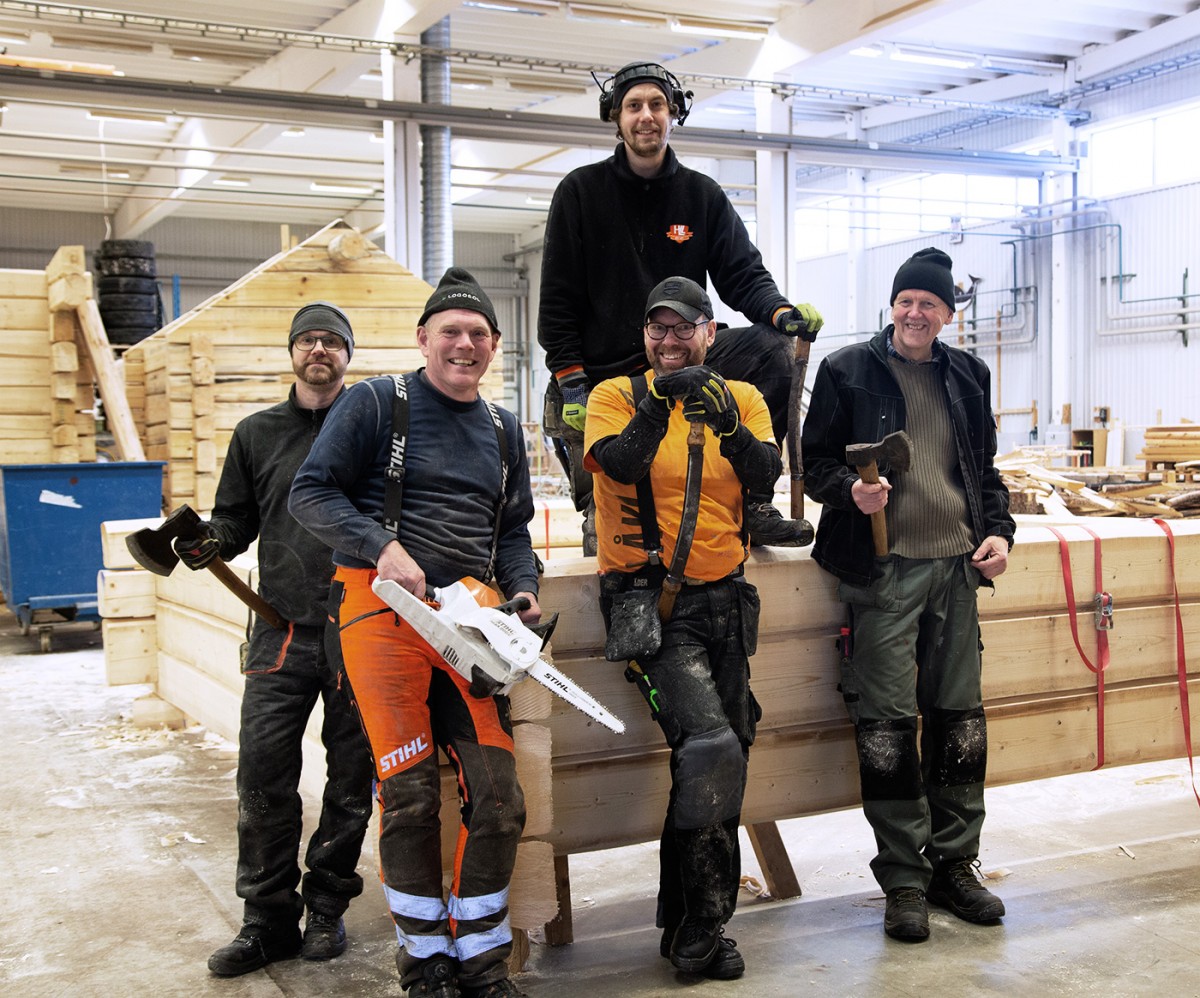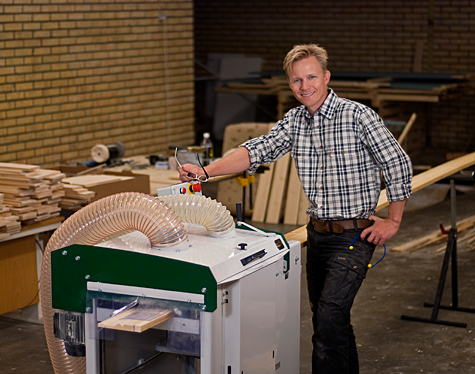What is the advantage of using a chain sawmill compared to other types of sawmill? A sawing surface to surpass all others! ”The Logosol chain sawmill gives a much smoother surface than other types of sawmill,” says Mattias Byström, during renovation of his summer cottage.
Almost two years ago, Logosol’s product manager and his family bought a wooden cabin. The cabin had been used as a ceramics workshop. The timber frame was fine, but otherwise the cabin needed a complete renovation to convert it to a summer cottage. All interior and exterior timber, panels and load-bearing beams, were sawn using a Logosol sawmill. All except for one board, which was sawn using a bandsaw.
The interior walls consist of three-sided planed timber with the rough sawn side facing outwards.
”The band sawn board is different from the others,” says Mattias showing it.
All the timber from the Logosol sawmill has an almost planed surface. No raised grains, just a smooth surface. The band sawn board looks hairy close up. The fibres have lifted and will probably lift even further when the wall is painted white.
”We need to sandpaper this board down before painting it,” notes Mattias.
Why does the Logosol sawmill give such a noticeably improved surface than a bandsaw, and much more so than a circular saw? Mattias answers:
”I think that it is because the sawblade has a blunter cutting angle. The chain, is quite simply sharper. The chain cuts off the fibres, while the sawblade, with its blunter cutting angle, seems to lift the fibres slightly before they are cut off, which can give a hairy surface. As most users have experienced, the fibres are even more obvious when painted. This problem can be avoided by sawing with a chain.









